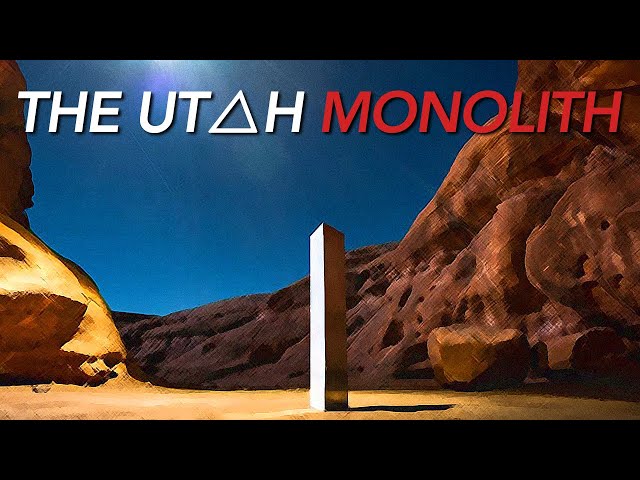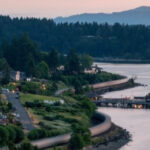
Utah, the heartland of the American West, is a geological marvel that invites explorers and scientists alike to delve into its intricate tapestry of rock formations, revealing the rich history of our planet. From the towering peaks of the Uinta Mountains to the mesmerizing depths of the Great Salt Lake, Utah’s landscape is a testament to the forces of nature and the passage of time. In this article, we embark on a journey through Utah’s geological formations, uncovering the stories etched in its rugged terrain.
Table of Contents
ToggleThe Red Rocks: A Canvas of Time
Utah’s iconic red rock country, epitomized by places like Zion National Park and Arches National Park, is a testament to millions of years of geological processes. The vibrant hues of these sandstone formations are a result of iron oxide staining, lending a surreal beauty to the landscape. But beneath their striking appearance lies a chronicle of ancient environments and geological events.
The towering sandstone cliffs of Zion National Park, sculpted by the erosive forces of wind and water, offer a glimpse into the past. These rocks, formed from ancient desert dunes, preserve a record of shifting sandscapes and the creatures that once roamed them. Fossilized tracks and traces provide clues to the life that thrived in this prehistoric desert, from early reptiles to dinosaurs.
Arches National Park, home to over 2,000 natural stone arches, is a testament to the erosive power of water and ice. Carved from the remains of an ancient salt bed deposited millions of years ago, these delicate arches stand as ephemeral sculptures in stone, constantly shaped by the elements. Each arch tells a story of geological transformation, as layers of rock are eroded away to reveal the sculpted masterpieces beneath.
The Mighty Plateaus: Guardians of Time
Utah’s plateau country, including the vast expanse of the Colorado Plateau, is a landscape of rugged beauty and geological intrigue. From the mesas of Monument Valley to the labyrinthine canyons of Canyonlands National Park, these elevated plateaus bear witness to the slow march of geological time.
The Colorado Plateau, characterized by its flat-topped mesas and deep canyons, is a geological crossroads where ancient seas once ebbed and flowed. The exposed rock layers, ranging from ancient Precambrian formations to more recent sedimentary deposits, provide a window into Earth’s distant past. Fossilized remains and intricate sedimentary structures offer clues to past climates and ecosystems, while ancient rock art speaks to the human presence that has long inhabited this region.
Monument Valley, with its towering sandstone buttes and sweeping vistas, is an iconic symbol of the American West. Carved by the erosive forces of wind and water, these sculpted monuments stand as sentinels of time, guarding the secrets of the past. From the Navajo people who have called this land home for centuries to the pioneers who ventured westward in search of new horizons, Monument Valley is a testament to the enduring spirit of exploration and discovery.
The Great Basin: A Sea of Salt and Sage
In the western reaches of Utah lies the Great Basin, a vast expanse of desert valleys and rugged mountains. Dominated by the Great Salt Lake, the largest saltwater lake in the Western Hemisphere, this region is a landscape of contrasts and contradictions.
The Great Salt Lake, with its shimmering waters and barren shores, is a remnant of ancient Lake Bonneville, a vast inland sea that once covered much of western Utah. As the climate changed and the lake dried up, it left behind a legacy of salt flats and briny marshes, creating a unique ecosystem unlike any other on Earth. Today, the Great Salt Lake serves as a critical habitat for migratory birds and other wildlife, drawing visitors from around the world to its shores.
Beyond the shores of the Great Salt Lake lies the rugged beauty of the West Desert, a landscape of sagebrush plains and hidden mountain ranges. Here, ancient volcanic eruptions have left their mark on the land, shaping the terrain and creating unique geological formations. From the volcanic fields of the Black Rock Desert to the rugged peaks of the Deep Creek Range, the West Desert is a landscape of untamed beauty and geological diversity.
Conclusion: Preserving Utah’s Geological Heritage
Utah’s geological formations are more than just scenic wonders—they are windows into the past, offering insights into the Earth’s history and the forces that have shaped our planet over millions of years. From the towering red cliffs of Zion to the salt flats of the Great Salt Lake, each landscape tells a story of geological transformation and the resilience of life in the face of adversity.
As we continue to explore and study Utah’s geological heritage, it is essential that we also strive to preserve and protect these fragile landscapes for future generations. By understanding the geological processes at work and the importance of conservation, we can ensure that Utah’s natural wonders remain a source of inspiration and discovery for years to come.







